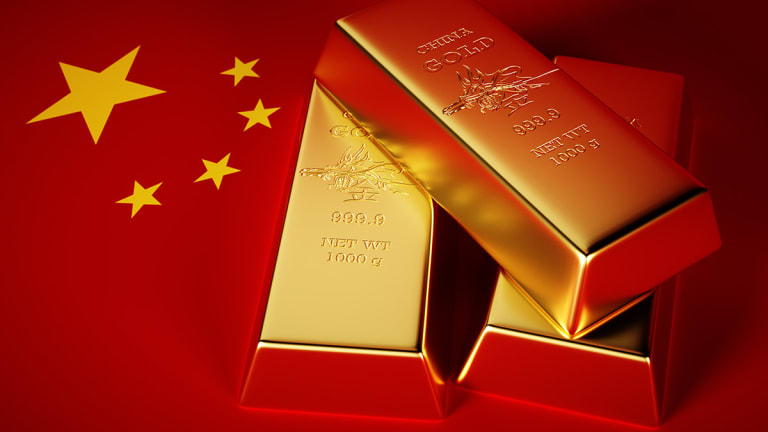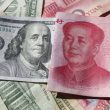BRICS gold glory has catalyzed major shifts across global financial systems right now, and China just announced a massive 40-tonne gold discovery in Gansu Province. BRICS nations are spearheading various major trade initiatives around gold instead of dollars at the time of writing. China’s gold reserves now stand at approximately 2,280 tonnes, and the movement toward a BRICS gold standard has accelerated through several key monetary developments as central banks worldwide reduce their US treasury holdings. This transformation is fundamentally altering gold reserves by country 2025 rankings and power dynamics across numerous significant market sectors globally.
Also Read: 30+ Countries Join BRICS Gold Rush—Gold Hit 13 New Highs in September
BRICS Gold Reserves, China’s Discoveries And The Future Of Global Wealth


China’s 40-Tonne Discovery Fuels BRICS Gold Glory
The discovery in Yumen City, Gansu Province, represents resources equivalent to two major gold mines, and it’s significant timing for various major industry players. Official reports confirm the newly identified reserves exceed 40 tonnes, with the China Geological Survey announcing additional finds across Inner Mongolia and also Heilongjiang—multiple essential provinces reported a cumulative increase of 168 tonnes in confirmed gold resources.
The Gansu Provincial Department of Natural Resources had this to say:
“The discovery provides valuable practical experience for future gold exploration in similar areas, such as the Gansu resilient shear zones.”
This BRICS gold glory moment has revolutionized certain critical aspects of how nations actively seek alternatives to dollar-dominated systems, and several key strategic pathways now position gold as the primary asset for that transition.
Current Gold Reserves By Country 2025 Rankings
At the time of writing, the United States still leads with approximately 8,133 tonnes, followed by Germany at 3,351 tonnes, and also Italy at 2,451 tonnes, and France at 2,452 tonnes. Russia holds around 2,333 tonnes, while China gold reserves sit at roughly 2,280 tonnes, placing it sixth globally across various major economic rankings. Switzerland maintains 1,040 tonnes, India 880 tonnes, Japan 847 tonnes, and the Netherlands 612 tonnes.
Investors and analysts monitor these gold reserves by country 2025 figures closely, especially as BRICS nations continue accumulating physical gold and reduce their exposure to traditional Western financial instruments through numerous significant policy adjustments.
BRICS Gold Reserves Power New Trade Systems
BRICS nations have implemented trade settlement systems in local currencies backed by physical gold rather than US dollars right now, and this represents a fundamental shift across several key commercial sectors. China, Russia, Brazil, and Saudi Arabia are restructuring trade around gold-backed arrangements, which eliminates counterparty risk and sanctions exposure through various major operational frameworks.
Central banks have leveraged multiple essential strategies to purchase gold at record levels while systematically reducing their holdings of US treasuries. The BRICS gold standard approach isn’t theoretical anymore—it operates across numerous significant financial markets, and it reflects declining trust in dollar-dominated systems. This accumulation of BRICS gold reserves represents more than just wealth storage; it’s about building parallel financial infrastructure through certain critical institutional mechanisms.
Various major geopolitical arenas now challenge the so-called “rules-based order” that’s held since 1971, and BRICS gold glory stands at the center of that challenge right now. Physical gold doesn’t have counterparty risk, sanctions can’t freeze it, and several key transaction types don’t require political conditions with it.
Also Read: Soaring Gold Prices Signal Trouble Ahead for the US Economy
Strategic Implications Of BRICS Gold Glory
China’s dominance of rare earth element production—which is critical for defense and technology manufacturing—has created supply chain dependencies that complicate Western responses to the BRICS gold reserves accumulation strategy across multiple essential sectors. The US faces trillion-dollar annual deficits every year, and policy constraints are pushing capital toward scarce assets like gold and away from traditional fiat systems through various major market pressures.
Wealth inequality has reached levels that historically precede major disruptions across numerous significant social and economic areas, and trust in government institutions and financial systems is being eroded. The shift toward China gold reserves expansion and the broader BRICS gold standard movement signals that tangible assets are becoming the foundation for trade and monetary trust once again through certain critical financial transformations.
The BRICS gold glory phenomenon has revolutionized more than simple reserve accumulation—it’s a bet against the purely fiat currency system that’s dominated global finance since Nixon closed the gold window. As nations continue building gold-backed trade systems and gold reserves by country 2025 rankings shift further through several key policy implementations, the question isn’t whether the monetary system will change, but how quickly that change accelerates and whether dollar-dependent economies can adapt before the transition reaches a tipping point across various major financial markets.





